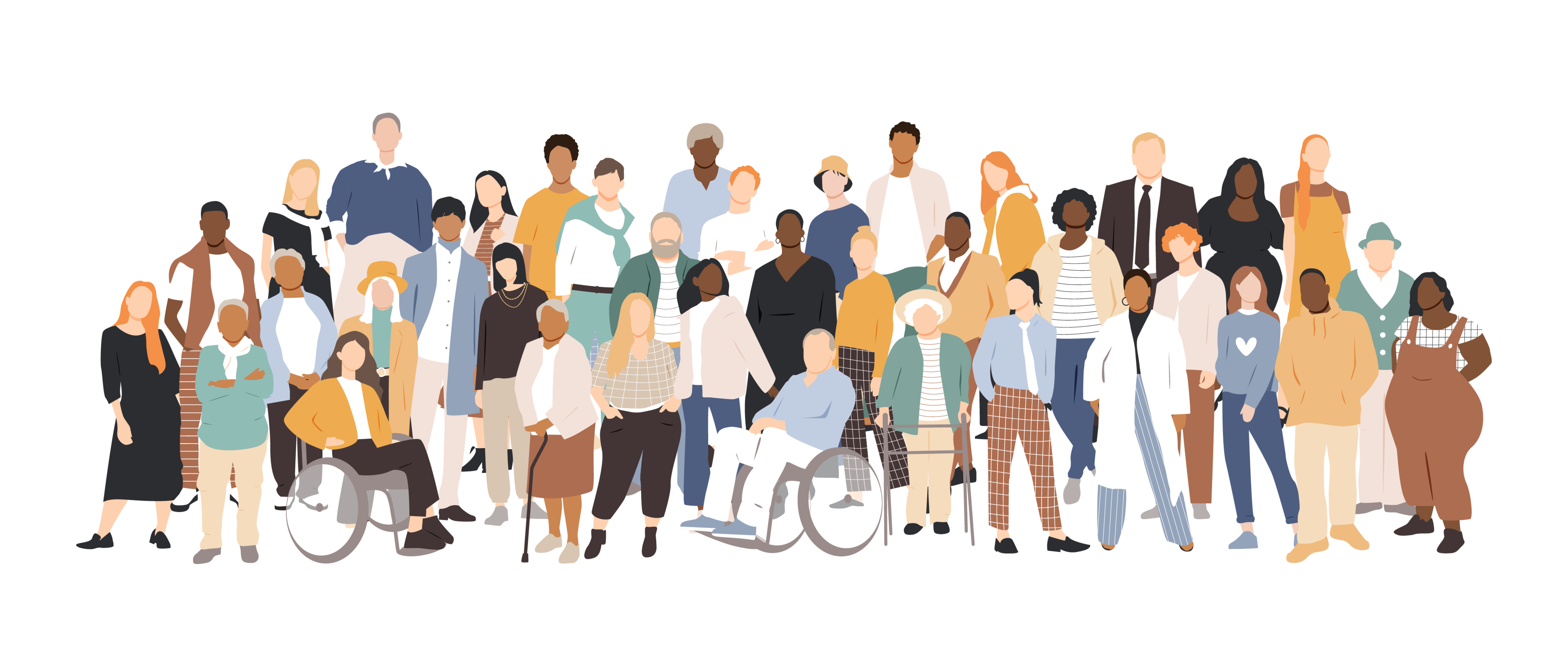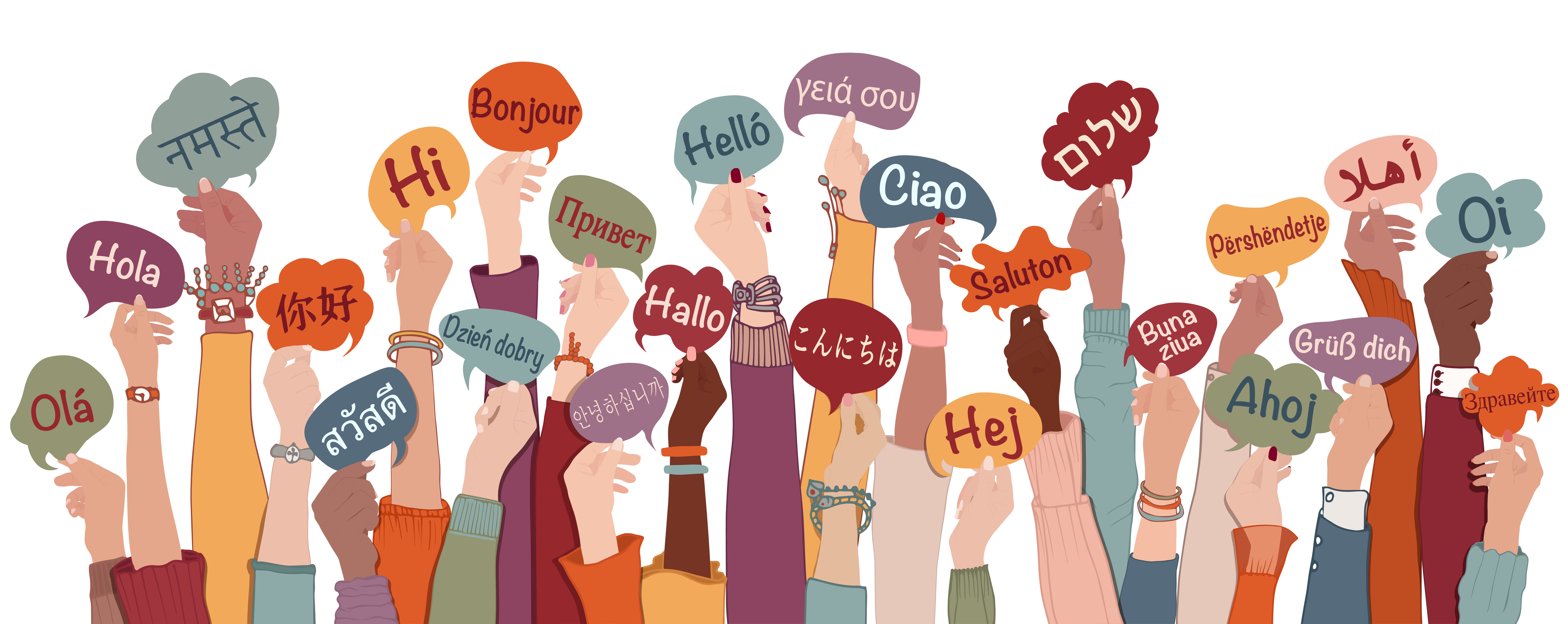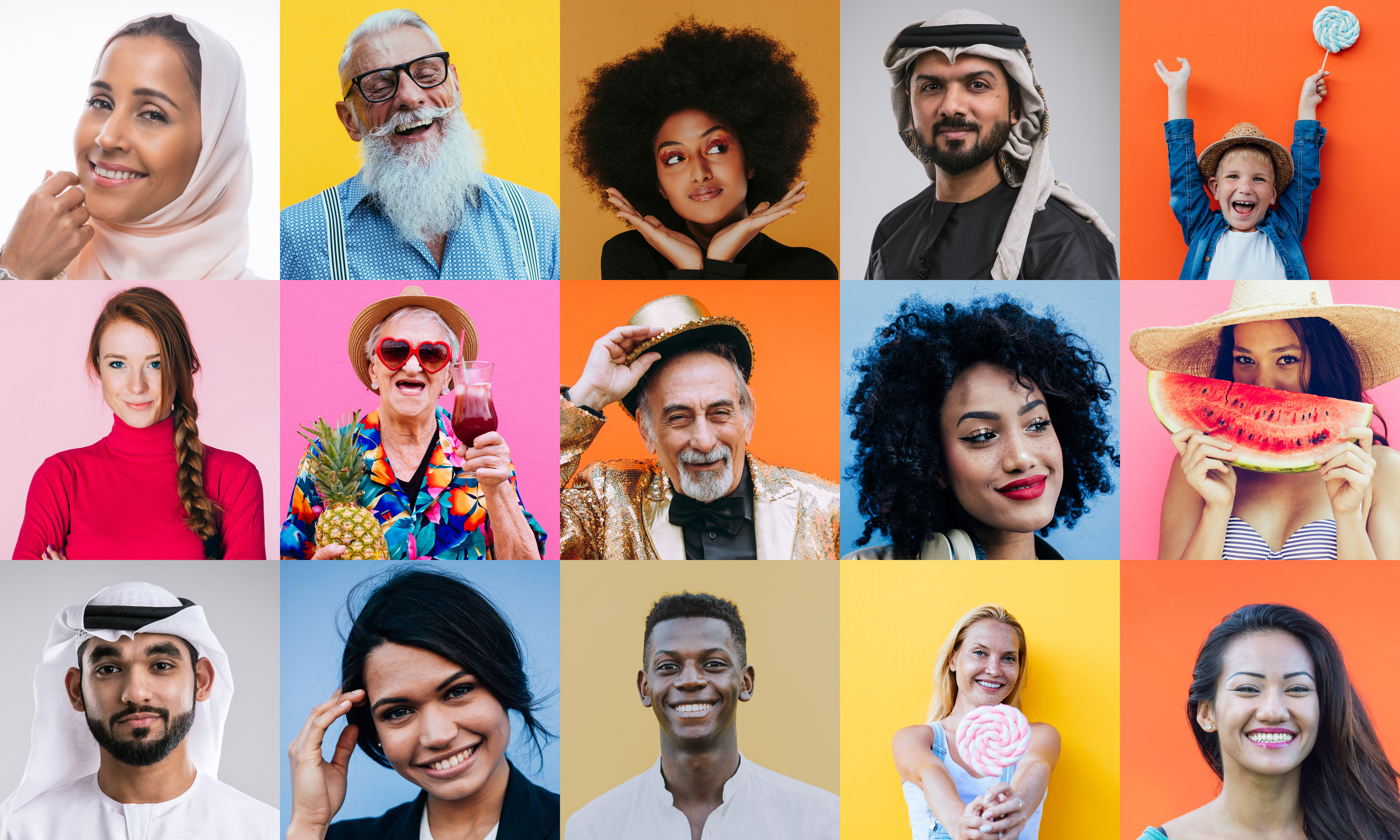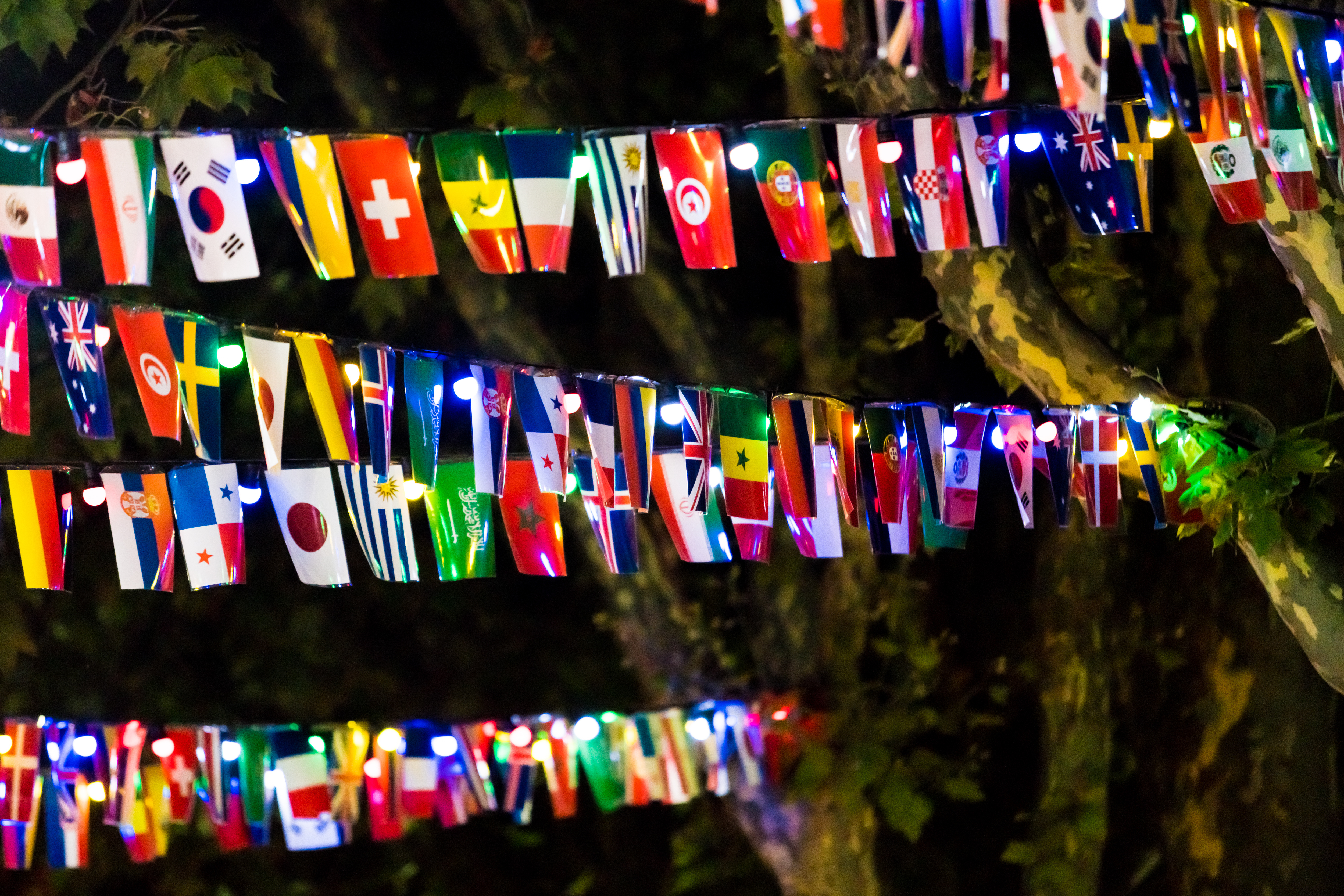Diversity, Equity and Inclusion

This guide provides a starting point for information and practices to encourage individual and organizational transformation around diversity, equity, inclusion and the practice of cultural humility. The resources provided will challenge libraries to deconstruct systemic barriers impeding an equitable society.
In aligning with the mission of the NNLM, we know that libraries work in geographic areas and populations with a lack of access to or trust in health care services. In your efforts to improve the public’s access to health information and enable them to make informed decisions about their health, we hope this guide will enable you to provide community engagement with intention and respect.
Let’s start with some definitions.
Cultural humility involves a lifelong commitment to consistent self-reflection and respecting and honoring the knowledge, wisdom, and experiences of those with cultures different from your own. Cultural humility goes beyond cultural competence, which is awareness that cultural differences exist and are dynamic.
The American Alliance for Museums has a useful infographic with definitions of diversity, equity, inclusion and accessibility:
- Diversity is all the ways that people are different and the same at the individual and group levels. Even when people appear the same, they are different. Organizational diversity requires examining and questioning the makeup of a group to ensure that multiple perspectives are represented.
- Equity is the fair and just treatment of all members of a community. Equity requires commitment to strategic priorities, resources, respect, and civility, as well as ongoing action and assessment of progress toward achieving specified goals.
- Accessibility is giving equitable access to everyone along the continuum of human ability and experience. Accessibility encompasses the broader meanings of compliance and refers to how organizations make space for the characteristics that each person brings.
- Inclusion refers to the intentional, ongoing effort to ensure that diverse individuals fully participate in all aspects of organizational work, including decision-making processes. It also refers to the ways that diverse participants are valued and respected members of an organization and/or community.
The Annie E. Casey Foundation shares definitions and core concepts tied to equity vs. equality and other racial definitions. We encourage you to visit their post as they outline definitions related to racial literacy.
We hope you will find this guide useful. If you have resources you think would be useful, please contact NNLM Region 1.

Readings
Books
Bombaro C. (2020). Diversity equity and inclusion in action: planning leadership and programming. ALA (American Library Association) Editions.
This book offers thought-provoking ideas and actionable advice from librarians who have implemented replicable and scalable initiatives that have helped their institutions understand and address issues surrounding the concepts of diversity, equity, and inclusion.
Jones S. D. & Murphy B. (2019). Diversity and inclusion in libraries : a call to action and strategies for success. Rowman & Littlefield.
This book provides practical strategies for building diverse and inclusive environments in libraries. With diverse voices from the profession, this volume frames why diversity and inclusion matter and offers best practices for building socially responsive libraries that reflect and acknowledge the full spectrum of identities and communities.
Lee C. Lym B. Bryant T. Cain J. & Schlesinger K. (2022). Implementing excellence in diversity equity and inclusion: a handbook for academic libraries. Association of College and Research Libraries.
This book pulls together emerging practices that academic libraries can use to create more equitable and representative institutions. It provides practical guiding principles, effective practices, and sample programs and training.
Articles
Hathcock, A. (2015). White Librarianship in Blackface: Diversity Initiative in LIS.In the Library with a Lead Pipe.
“Our diversity programs do not work because they are themselves coded to promote whiteness as the norm in the profession and unduly burden those individuals they are most intended to help.” In this article, April Hathcock, Scholarly Communications Librarian at NYU, examines why diversity initiatives in the library profession are not effective. Hathcock offers approaches for real support and reframing the thinking around diversity as a goal to be achieved rather than a problem to be solved.
Hodge, T. (2019) Integrating Cultural Humility into Public Services Librarianship, International Information & Library Review, 51:3, 268-274, DOI: 10.1080/10572317.2019.1629070
In this article, the author defines cultural humility and challenges librarians to take on the practice of critically examining their biases and engaging in the continuous work required to shed light on these biases to minimize their effect on patron interactions and services.
Blog Posts
Morgan-Daniel, et al., (2022). A Work in Progress: Strategies to Foster Diverse Leadership in Libraries. MLA (Medical Library Association) Connect.
This article by the Medical Library Association Diversity, Equity, and Inclusion Committee provides a summary of ways diversity in leadership roles can be fostered and encouraged in libraries and library associations.
Rezvani,S. & Gordon, S.A. (2021). How Sharing Our Stories Builds Inclusion. Harvard Business Review.
This article discusses a story-based approach to diversity, equity, and inclusion.

Inclusive Language Guides
These guides can be used for a wide variety of resources, including author bios, presentations/webinars, Moodle classes, social media, resource guides, funding announcements, web content, and more.
Advancing Health Equity: A Guide to Language, Narrative and Concepts
American Medical Association (AMA) and Association of American Medical Colleges (AAMC) Center for Health Justice provides a guide intended to raise questions about language and commonly used phrases and terms, with the goal of cultivating awareness about dominant narratives and offering equity-based, equity explicit, and person-first alternatives
The American Psychological Association (APA), a common style used in academic/published writing, provides guidelines and examples of bias-free language. There is a unique section on Participation in Research, which may help those talking about or to clinical audiences.
California State University Diversity/Inclusivity Style Guide
The California State University’s Diversity/Inclusivity Style Guide provides an academic focus as a reference for faculty, including general discussion around decision making and preferred terminology.
CDC (Centers for Disease Control) Health Equity Guiding Principles for Inclusive Communication
The Centers for Disease Control and Prevention (CDC) provides this resource to emphasize the importance of addressing all people inclusively and respectfully. This resource provides guidance, principles and preferred terms for health communications.
The General Services Administration (GSA) Style Guide provides “guidance for voice and tone, author bios and photos, branding, grammar, images, plain language, inclusive language, and more.”
The University of Iowa’s Diversity, Equity, and Inclusion DEI Style Guide provides general guidance and offers tips and examples for more inclusive language.

Tools
American Association of Medical Colleges (AAMC): Diversity and Inclusion Toolkit Resources
This toolkit is meant to aid diverse academic medicine professionals in their career development and raise awareness of the issues of diversity in academic medicine.
American Library Association (ALA) Diversity, Equity, and Inclusion (DEI) Scorecard for Library and Information Organizations
The Scorecard is designed to help administrators of information organizations assess their current practices in five core areas to produce actionable data for decision making and enacting a robust and sustainable commitment to equity, diversity, inclusion, and justice.
Association of College and Research Libraries (ACRL) Diversity Alliance Resource Guide
This guide provides resources for ACRL Diversity Alliance residency coordinators.
-Culturally Responsive Program Planning-
This program planning guide was created by Josh Parker, M.A.Ed. from the Mt. Baker-Snoqualmie National Forest in Washington. This guide will help program planners develop culturally responsive programing to meet your community's needs.
Cultural Proficiencies for Racial Equity: A Framework
ALA and ARL (Association of Research Libraries) created this framework “as a tool both theoretical and practical in its orientation, as a guide for developing personal, organizational, institutional, and systems-level knowledge and understanding of the nature of racism and its many manifestations.” This document seeks to deconstruct the systemic factors and affect changes in thinking in behaviors in libraries to improve service delivery and outcomes for racialized and minoritized communities.
These are resources developed by librarian Jessica Bell in partnership with faculty at the Massachusetts General Hospital (MGH) Institute of Health Professions to promote cultural competence and health equity.
Take a test to learn about your implicit association concerning social attitudes and health. “The mission of Project Implicit is to educate the public about bias and to provide a “virtual laboratory” for collecting data on the internet. Project Implicit scientists produce high-impact research that forms the basis of our scientific knowledge about bias and disparities.”
The SHARE Approach Taking Steps Toward Cultural Competence: A Fact Sheet Workshop Curriculum: Tool 7
“The SHARE Approach is a 1-day training program developed by the Agency for Healthcare Research and Quality (AHRQ) to help health care professionals work with patients to make the best possible health care decisions. It supports shared decision-making using patient-centered outcomes research (PCOR).”
This US government strategic plan provides leadership, technical aid, and guidance for government agencies to advance diversity, equity and inclusion in the Federal workforce.
Universal Design Tools
What is Universal Design
Universal Design can assist with creating environments, buildings, products, services, etc., that meet the needs of users of any age, size, ability, or disability.
The UDL (Universal Design for Learning) Guidelines
This website provides information on the Universal Design guidelines for Learning Framework to improve teaching and learning for all people based on scientific insights into how humans learn.
Videos and Webinars
Cultural Proficiencies for Racial Equity: A Framework Update (2022) Public Library Association (PLA).
“The Cultural Proficiencies for Racial Equity Framework is a tool, both theoretical and practical in its orientation, as a guide for developing personal, organizational, institutional, and systems-level knowledge and understanding of the nature of racism and its many manifestations.” This webinar is an informational session on that framework.
Cultural Humility in Public Libraries
This webinar was presented by Infopeople and features Xan Goodman, Health Sciences Librarian of the University of Nevada, Las Vegas. Xan discusses how using a lens of cultural humility can help you become better colleague and a provider of library services to patrons
Integrating Cultural Humility in Librarianship
This webinar, hosted in 2020 by San Jose School of Information, features Twanna Hodge, PhD candidate in the University of Maryland College of Information Studies. Twanna helps share the rationale for integrating cultural competency and cultural humility into librarianship with recommendtions on how to do so.
Kimberlé Crenshaw: What is Intersectionality?
Kimberle Crenshaw, professor at Columbia University School of Law, talks about intersectional theory, the study of how overlapping or intersecting social identities—and particularly minority identities—relate to systems and structures of discrimination.
NNLM Webinars
Because I See What You Do: How Microaggressions Undermine Hope for Authenticity at Work
In this webinar, Jodi-Ann Burey discusses barriers to authenticity in the workplace.
From Being to Doing: Anti-Racism as Action at Work
This webinar, presented by Ione T. Damasco, Associate Dean for Inclusive Excellence, Engagement, and Operations at University of Dayton (OH), focuses on anti-racism as action and looks critically at the structures defining professional environments.
Providing Multilingual and Multicultural Health Information
This webinar gives an overview of cultural humility and discusses sources of health information in other languages.

Organizations and Other Resources
Follow the links below to get more information on organizations who make it their mission to advocate and work toward a more inclusive society. Included here are a few non-profit and government organizations. While this list is not exhaustive, these organizations may be a good starting point to learn more about important issues, such as healthcare, education, housing, civil rights, etc., that may be important to you and the communities you serve.
Administration for Community Living (ACL)
The Administration for Community living works to maximize the independence, well-being, and health of older adults, people with disabilities across the lifespan, and their families and caregivers.
American Association of People with DisabilitiesThe American Association of People with Disabilities works to increase the political and economic power of people with disabilities. As a national disability-led and cross-disability rights organization, AAPD advocates for full civil rights for over 60 million Americans with disabilities.
American Association of Retired Persons (AARP)
AARP is the nation's largest nonprofit, nonpartisan organization dedicated to empowering Americans 50 and older to choose how they live as they age. With a nationwide presence, AARP strengthens communities and advocates for what matters most to the more than 100 million Americans 50-plus and their families: health security, financial stability and personal fulfillment.
American Civil Liberties Union (ACLU)
The ACLU works to “to realize this promise of the United States Constitution for all and expand the reach of its guarantees.”
Asian Americans Advancing Justice (AAJC)
Our mission is to advance civil and human rights for Asian Americans and to build and promote a fair and equitable society for all.
AAPI Equity Alliance is a coalition of community-based organizations that advocates for the rights and needs of the Asian American and Pacific Islander community in Los Angeles County and beyond.
The Equality Federation works collaboratively on critical issues—from advancing workplace fairness and family recognition to defeating anti-transgender bills and HIV criminalization laws—that affect how LGBTQ+ people experience the world from cradle to grave.
The Healthy Teen Network promotes “better outcomes for adolescents and young adults by advancing social change, cultivating innovation, and strengthening youth-supporting professionals and organizations.”
The goal of the Human Rights campaign is to ensure that all LGBTQ+ people, and particularly those of us who are trans, people of color and HIV+, are treated as full and equal citizens within our movement, across our country and around the world.
League of United Latin American Citizens (LULAC)
LULAC is the largest and oldest Hispanic organization in the United States. LULAC advances the economic condition, educational attainment, political influence, housing, health and civil rights of Hispanic Americans through community-based programs operating at more than 1,000 LULAC councils nationwide. The organization involves and serves all Hispanic nationality groups.
Southern Poverty Law Center Learning for Justice
“Learning for Justice seeks to uphold the mission of the Southern Poverty Law Center: to be a catalyst for racial justice in the South and beyond, working in partnership with communities to dismantle white supremacy, strengthen intersectional movements and advance the human rights of all people.” This website provides a variety of resources and tools for both students and professionals.
National Association for the Advancement of Colored People (NAACP)
The NAACP’s mission is to “achieve equity, political rights, and social inclusion by advancing policies and practices that expand human and civil rights, eliminate discrimination, and accelerate the well-being, education, and economic security of Black people and all persons of color.”
The National council on Aging works to deliver the resources, tools, best practices, and advocacy our nation needs to ensure that every person can age with health and financial security. Because aging well for all is a matter of equity. A matter of dignity. And a matter of justice.
This mission of the Native Justice Coalition is to provide “a platform for healing, social, and racial justice for all Native American people.”
Office of Minority Health Resource Center
The US Department of Health and Human Services Office of Minority Health Resource Center “offers information research and referrals for consumers, community organizations and health professionals including access to online document collections, database and funding searches, and customized responses to requests for information.”
Sister Song works to “build an effective network of individuals and organizations to improve institutional policies and systems that impact the reproductive lives of marginalized communities.”
RHIhub serves as a national clearinghouse on rural health issues. We are committed to supporting healthcare and population health in rural communities.
The RHIhub is your guide to improving health for rural residents—we provide access to current and reliable resources and tools to help you learn about rural health needs and work to address them.
Rural Community Assistance Corporation (RCAC)
RCAC partners with rural and Indigenous communities to achieve their vision and well-being through technical assistance, training, financial resources and advocacy.
UnidosUS is a nonprofit, nonpartisan organization that serves as the nation’s largest Hispanic civil rights and advocacy organization. Since our founding in 1968, we have contributed to a stronger America by elevating the voice of Latinos and defending and advancing our community’s concerns.
If there is an organization you would like to see listed on this list, please email us at nnlm@hshsl.umaryland.edu.
Content Creation Checklist
The NNLM is committed to cultivating an inclusive and diverse community through its engagement and training. The resources you create are a critical window into the communities you serve and serve as a tool to sustain and advance engagement. Presenting authentic diversity and highlighting your priorities around inclusion in the resources created may yield stronger affinity and increased engagement among key audiences while demonstrating a serious commitment to equity.
As the Content Creator consider the following before making your resource publicly available.
- Put a check mark by each statement if you agree with it.
- If you do not agree with the statement, consider what you may need to do so that you can.
- You may prefer to download the Content Creator Checklist to use with each resource you develop.
General
| Agree | General Statements |
|---|---|
| I created this resource because it is relevant to the intended audience. | |
| I included one or more members of the intended audience in the decision-making, design, or development of the content. | |
| I used citations and/or links whenever possible for the audience to access more information. | |
I considered other ways to present the content to meet the needs of a diverse intended audience. (I considered literacy levels, visual or auditory challenges, etc. that may not be addressed in the resource I created.) |
Narrative
| Agree | Narrative Statements |
|---|---|
| I used words written at a reading level appropriate for the intended audience. | |
| I referred to an Inclusive Language Resource Guide when I developed this resource. | |
I used appropriate and inclusive language and terminology. (I was careful not to make assumptions about biological sex, cognitive abilities, ethnicity, gender identity or expression, physical abilities, religious background, socio-economic status, family composition, lifestyle, sexual orientation, gender, ethnicity, age, or other characteristics.) | |
I avoided text that suggests that all members of an intended audience are similar. (I avoided terms like “all, everyone, etc.”) | |
| I used person-first language and terminology. I am careful not to use labels or acronyms that could be stereotyping or derogatory. | |
| I used text that includes the voice or words (quotes or endorsements) of one or more persons considered as a “trusted messenger” by the intended audience. | |
| Upon completing the resource, I read the narrative (as a whole) and included language that is an inclusive representation of many kinds of people. | |
I made an effort to distinguish the role of genetics versus socioeconomic factors. (I made an effort to focus on social determinants, structural or environmental factors and tried not to victim blame.) | |
| Before publishing this resource, I firmly believe this item welcomes engagement of people from diverse backgrounds and promotes inclusion and representation. | |
| I considered if the content would be better if developed in, or translated into, a relevant language for the audience intended. |
Images
| Agree | Images Statements |
|---|---|
| Before I included symbols or images of unknown value, meaning, or context, I consulted with a member of the intended audience to ensure its appropriateness to context and culture. | |
| I consulted with members of the intended audience of the appropriateness of the images or media created for this resource. | |
| I believe the images selected are affirming and honoring the intended audience. | |
| I believe the images or media in my materials represent a range of characteristics. | |
| I believe the selected images used are not perceived as promoting a stereotype or reinforce a social stigma. | |
| I believe the images selected reflect the intended audience. |
Accessibility
| Agree | Accessibility Statements |
|---|---|
| I used an Accessibility Checklist to make sure that the resource is accessible for all users. | |
| I referred to the Web Content Accessibility Guidelines (WCAG 2.0) for web-based content. | |
I considered accessibility for resources shared on social media. (Refer to the Federal Social Media Accessibility Toolkit for guidance.) | |
I used descriptive text for hyperlinks and eliminated visual indicators. (For Example, “click here” or “this link”.) | |
| I used appropriate descriptive alternative text. | |
| I made captions available for spoken audio (if applicable) | |
| I ensured that captions are descriptive for the audience. |
Making Content Available
| Agree | Making Content Available Statements |
|---|---|
I considered other information formats to present the content to meet the needs of a diverse intended audience. (Video, podcast, electronic document, etc.) | |
| I considered how this resource would be presented online. | |
I considered how this would look when shared on social media. (Refer to the CDC Health Communicator’s Social Media Toolkit) | |
| I considered how this would look printed and/or made available electronically. | |
| I considered making the item an editable resource when published so that intended audiences may adapt the resource further for their communities. |
Note: This content is adapted from the All of Us Content Creation Check List, All of Us Program Cultural Humility 2020 Standards, and the DRIVE Curriculum Appraisal Tool.
Reviewed August 11, 2023
